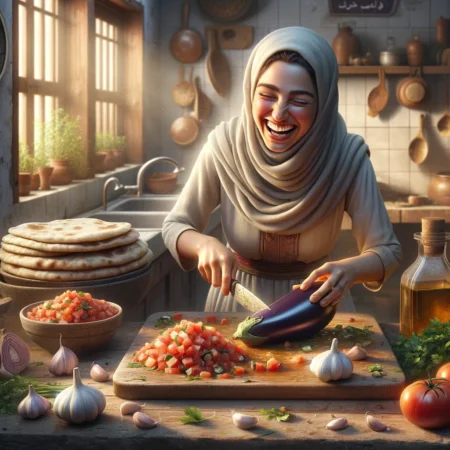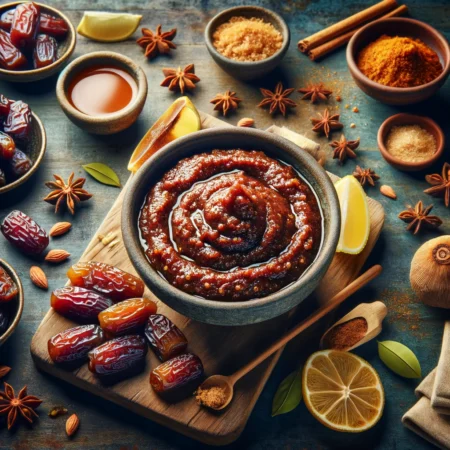The underbelly of India’s bustling streets pulses with more than just the cacophonous sounds of rickshaws and the heady scent of street food. It carries with it the whispered tales of bygone eras, ancient recipes, and age-old traditions that have seeped deep into its soil. Of all these, one dish has beckoned me, tantalized me with its enigmatic origins, and pulled me into the depths of its stories – the mutton keema.
Somewhere amidst the bustling alleys of Delhi, I found myself at an age-old eatery, its walls stained with time, narrating tales from eras gone by. The aroma was that of spices and slowly simmered meats. As I sat on a rickety stool, an old man named Rajan served up a plate, telling me, “This isn’t just minced meat, sahib. This is a piece of history.”
Keema, derived from the Turkish word ‘qıyma’, meaning ‘minced’, had journeyed a long way to find its place on my plate. The nomadic Turks had brought it to the subcontinent, where it evolved, borrowing from the Persians, adapting to the local palate, and blending with India’s rich tapestry of flavors.
Rajan leaned in, wiping his hands on his apron, his eyes misty with nostalgia. “You know, sahib, back in the day, keema wasn’t just a dish; it was an art form. It was reserved for royalty, for celebrations, for moments of joy. Each region, each family, each chef added their touch, their secret ingredient.”
His grandmother’s version, he informed, had a unique twist: pomegranate seeds for a touch of sweetness amidst the spice. A recipe whispered down generations, like a treasured family secret.
As I savored each bite, I could almost picture the Mughal emperors, in their majestic courts, taking a bite of the keema, its fine texture and rich flavors an embodiment of their vast empire’s grandeur. The intricate play of spices, the heat of the green chilies, the tang of the tomatoes, and the succulence of the finely minced mutton – each element was a chapter from history.
Later, as the sun dipped below the horizon, casting an amber glow on the ancient city, I found myself in the bylanes of Lucknow, a city known for its kebabs and poetic nuances. Here, the keema had another story to tell. It was less about the opulence of the Mughal courts and more about the common man’s ingenuity. Without the means to afford large chunks of meat, the locals had taken the remains, minced it finely, and added spices, turning something rudimentary into a dish that was nothing short of a culinary revelation.
The next day, in the bustling markets of Mumbai, I discovered yet another incarnation of the dish. Here, the mutton keema was served with pav, a type of bread introduced by the Portuguese. The coastal city had embraced the dish, given it a local touch, and made it its own.
As I journeyed through the country, it became evident that mutton keema was more than just food. It was the chronicle of a nation, a testament to its resilience, adaptability, and endless creativity.
It wasn’t just about the meat or the spices. It was about the hands that ground the meat, the mothers who passed down their secrets, the emperors who relished it, and the common man who turned it into a masterpiece.
Back in New York, as I minced meat in my kitchen, the scents of spices wafting around me, I couldn’t help but smile. The mutton keema wasn’t just a dish; it was a journey, a story, a legacy. And with each bite, I wasn’t just eating; I was traveling through time, tracing back through centuries, through dynasties, through tales of love, war, and survival.
In the world’s vast culinary landscape, the mutton keema stands out, not just for its delightful flavors but for the stories it carries within. It’s more than a meal; it’s history on a plate. And each morsel? Well, that’s a story waiting to be savored.
Mutton Keema (Mince)
Ingredients
- 1 kg Mutton minced
- 1 tbsp Red chilli powder
- 1 tsp Turmeric powder
- 1 ½ cup Curd, beaten
- Salt to taste
- 2 tbsp Ginger Garlic paste
- 2-3 Green chilli, slit
- Whole Nutmeg
- 5-6 Mutton bones
- 3 tbsp Ghee
For Tempering
- ¼ cup Ghee
- 2 tbsp Oil
- 1 Bay leaves
- 2 Cloves
- 10–12 Black peppercorns
- 2 Black Cardamom
- 3-4 Onion, chopped
- 1 cup Curd, beaten
- 2 tbsp Ginger Garlic paste
- 1 tbsp Degi Red chilli powder
- 2 tbsp Coriander powder
- 1 tsp Turmeric powder
- ½ tsp Cumin powder
- A pinch of Asafoetida
For Masala
- 3 tbsp Black peppercorns
- 5-6 Black Cardamom
- 3-4 Green Cardamom
- 3-4 Cloves
- 3 tbsp Coriander stems
- ½ cup Green peas
- 1 tbsp Prepared masala
- 1-2 Green chilli, chopped
- Hand full of Coriander leaves, chopped
- Hand full of Mint leaves, chopped
Directions
- In a bowl, add mutton mince, red chilli powder, turmeric powder, curd, salt to taste, ginger garlic paste, green chilli, whole nutmeg, mutton bones mix everything well.
- Transfer this into the cooker. Add ghee cover and cook till 2-3 whistles.
- For Tempering – Heat oil and ghee in another saucepot, add bay leaves, cloves, black peppercons, black cardamom – let the whole spices splutter.
- Add onion and saute till light golden brown.
- In a bowl, add curd, ginger garlic paste, red chilli powder, coriander powder, turmeric powder, cumin powder, a pinch of asafoetida mix well.
- Transfer this mixture into the saucepot – saute well.
- Remove the mutton bones and the whole nutmeg and mix it well.
- Put the mince in the sauce pot and mix well.
- Then add chopped coriander stems and green peas and then the prepared masala mix it well.
- Cover and cook for 2 minutes.
- Lastly add chopped coriander, mint and green chilli.
- Garnish it with coriander leaves and serve hot with roti or pav.
- For Masala – In a grinder add black peppercorn, cloves, black cardamom, green cardamom and grind it into powder. And keep it aside for later use.





